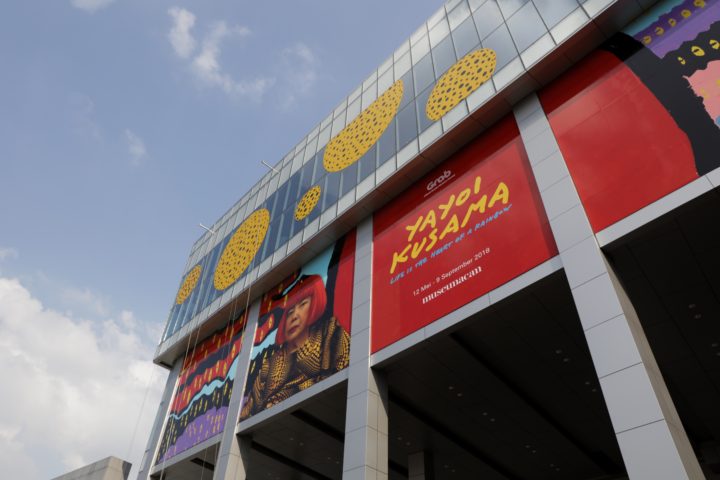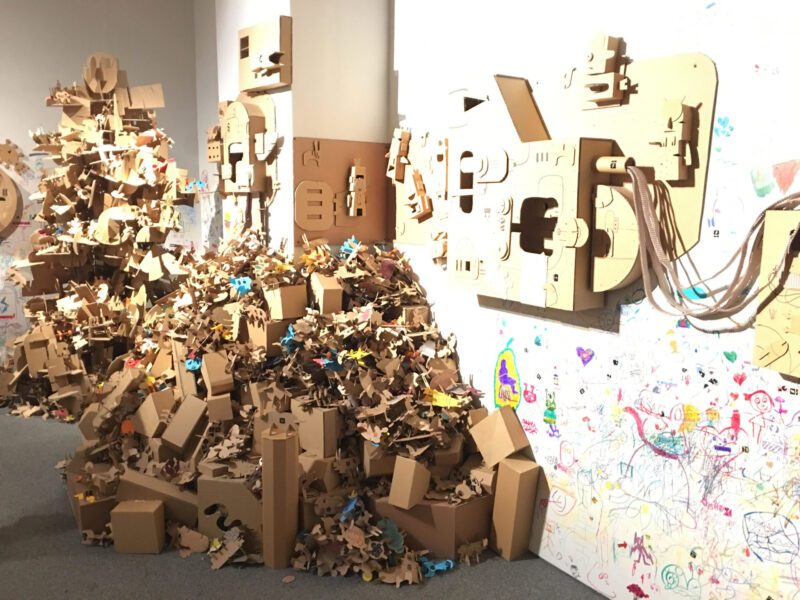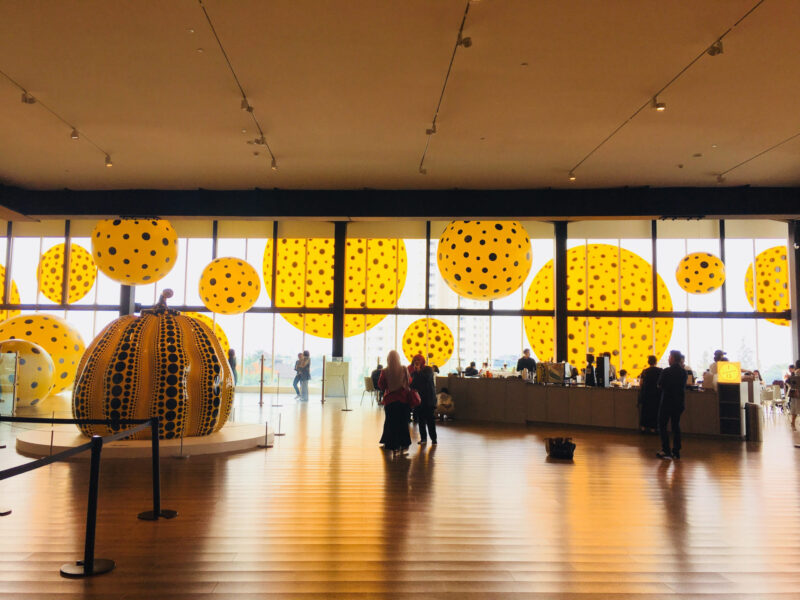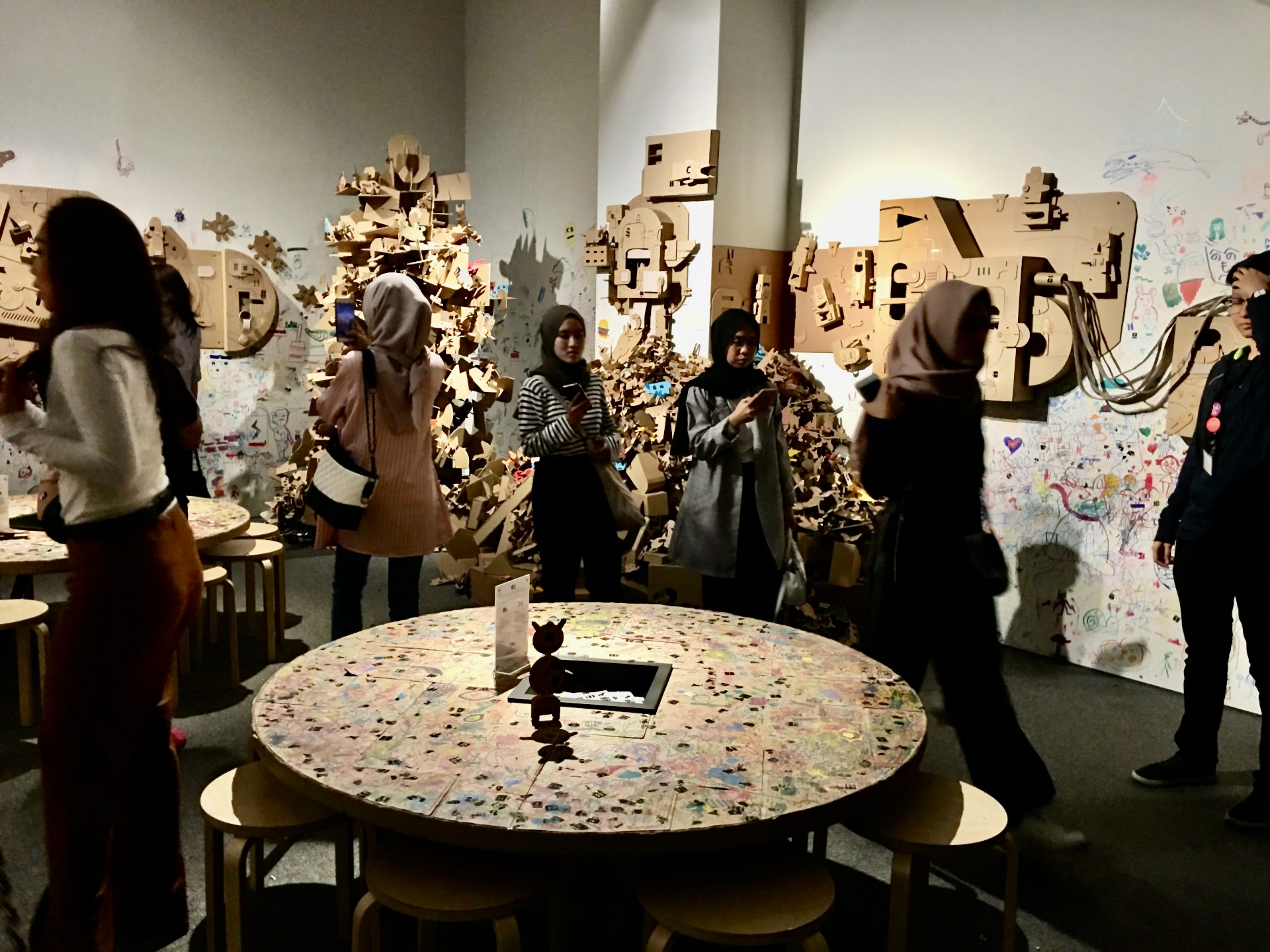【Museums Link Asia-Pacific】Born for Art Education and Cultural Heritage: The Museum of Modern and Contemporary Art in Nusantara
Author/Photography:
Chou, Pin-Hua (MA, Graduate Institute of Museum Studies, Taipei National University of the Arts)
Lin, Yun-Fong (PhD student, Ph.D. Program in Cultural Heritage and Arts Innovation Studies, Taipei National University of the Arts)
The Museum of Modern and Contemporary Art in Nusantara (MACAN) is a private art museum newly opened in 2017, founded by Indonesian billionaire Haryanto Adikoesoemo to promote art education and cultural heritage, trying to sow the seeds of art in Indonesia, a country where art is very business-oriented. By interviewing the curator, education department head and curatorial researcher, we learn about the operation purpose, exhibition production and educational activities of this museum, through which we also understand how MACAN allows children to understand their own culture and history in order to become the more creative generation next.
Keywords: art education, art museum, Indonesian art
Museum of Modern and Contemporary Art in Nusantara (MACAN), established in 2017, is the first international modern and contemporary museum in Indonesia. MACAN has been opened for 10 months and had 90,000 visitors during the first 3 months. Besides, MACAN is listed as top 5 innovative museums, including Louvre Abu Dhabi, Musée Yves Saint Laurent Marrakech and other new museums. MACAN, as a new and popular museum of modern and contemporary Art and a bridge between modern society and traditional culture, conveys abundant cultural heritage in Indonesia with exhibitions, educational activities, speeches and workshops and helps people build up their cultural awareness.

Educational place for social creativity
The collections in MACAN are owned by Indonesian oil magnate Haryanto Adikoesoemo and include works of many famous artists, such as Andy Warhol, Jean-Michel Basquiat and Robert Rauschenberg etc.
Haryanto Adikoesoemo is interested in the communication of art. Indonesia is a country with 17,000 islands, full of vigorous culture and art ranging from contemporary art to traditional crafts, such as dyeing & weaving and shadow play. However, even if there are festivals like Jakarta Biennale, the art in Indonesia is seemingly isolated and the lone ranger to the world partly due to the lack of complete institutions. There are plenty of art and culture halls in Jakarta all being business-oriented. Art is for market and collections are for making profits. People’s knowledge of art comes from the auction houses, such as Sotheby’s and Christies. But Haryanto Adikoesoemo is different, and he neglects the business interests since he really wants to create a new concept and environment for integration of Eastern and Western art. He anticipates MACAN can bring the social creativity to Indonesia and gives people the opportunity to recognize local artists through art education and learn the history of Indonesia through art works. The final goal is to operate this museum as an art education institution and to become the first museum of modern and contemporary Art in Indonesia.
The very first exhibition “Art Turns. World Turns” in the museum displayed nearly one-tenth of collections of Haryanto Adikoesoemo, covering the developments of the local society in Indonesia and global art trends during the last 200 years. It specifically mentioned the connections between these 2 divisions. In this period, the 2 main art trends in the world are social realism and abstract expressionism and they exerted their influences from Yogyakarta and Banten in Indonesia. The exhibition displayed works of Banten artists Srihadi Soedarsono alongside with Mark Rothko, to show the trend of the world and how Indonesia reflected to the global trend.
The image of personnel in the art museum
The interviewee Asri Winata, a curatorial assistant, shared a great breakthrough in holding an exhibition in MACAN. Asri Winata said actually most Indonesian artists had no idea about copyrights and neither did they care about the legal protection of their works. However, the museums nowadays do concern about the copyright of art works and apply work authorization for artists. Asri Winata mentioned her job is to assist Indonesian artists to learn the importance of protecting their works and actually practice it in the exhibition “Art Turns. World Turns.”
As one of the only two researchers in the museum, Asri Winata thinks that she’s very lucky to participate in this exhibition. The curators of the exhibition are Charles Esche and Agung Hujatnika, two scholars that are familiar with Indonesian art, not the employees in the museum. For Asri Winata, it’s valuable to fully recognize the collections and learn complete images of modern and contemporary art in Indonesia with these two curators. Although the exhibition was over when we did the interview, we could deeply feel the staff’s enthusiasm for planning this exhibition and the significance of the exhibition for Indonesians and their cultural history.
The educational team member Renjana Widyakiran, in charge of designing educational activities, said that “for her, the true purpose of the exhibition is to have Indonesian artists and stories reachable for the public. During the exhibition, they designed many educational activities, for example, the artists became teachers to lead children to play and doodle with various materials in kids’ art space.

It couldn’t be more interesting than to listen to Renjana Widyakirana talk about her story. She is a young lady who just finished her studying from graduate school; she studied in Dept. of fine arts in university and majored in Installation art. In graduate school, she stated to study Arts Management and worked directly in museums after graduation. When I asked some practical questions such as working hours, she laughed and said that although it’s a 9-5 job, she often leaves the office after 7 or 8 o’clock. It’s easy to forget about time when you work in the business and environment you like. Since Haryanto Adikoesoemo cares about education, all the members in the educational team are talented and hard-working. In addition to the young people like Renjana, there is Ade R. Hanif who works as contact window of cooperation with schools in the educational department.
Ade R. Hanif had worked in the field of education for 20 years and his former job was the principle of a middle school. What he does in MACAN is to recruit young students from rural schools to work in museums, which is also the intention of the founder. Haryanto Adikoesoemo believes that the frequent access to art for a kid will expand their horizon and help their growth and development. For kids in Indonesia who lacks enough access to art, the museum provides free transportation and free tickets for exhibitions and will also arrange artists to guide them and design the activities related to exhibitions, giving kids a complete experience of art without any burden. The educational activities are the essential part to the museum and what makes MACAN so special is that although it’s private art museum, it is committed to charities and reaching more people through the popularization of the art education.
A platform for the public
If a museum tries to reach as many people as possible, it needs to understand who they are, what they need and what they lack. There are around 10 million people in Jakarta and from the crowded city, it shows its dense population. Aaron Seeto, the present curator in MACAN, said the first impression for everybody arriving to Jakarta is the overcrowded space. When people enter the city from the airport, they see the famous traffic jam. There are too many people but have nowhere to go. Meanwhile, Indonesians like to gather in squares and parks, just feeling like they are packed like sardines. Knowing this, MACAN especially extends its opening time till 8 p.m. when other public museums close at 4 to 5 p.m., providing a place for Indonesians to meet after works or on weekends.
The museum was holding special exhibition of Yayoi Kusama during our visit. There are many works from Yayoi Kusama in the collections of Haryanto Adikoesoemo; therefore, the special exhibition was held in MACAN right after Singapore. MACAN is located in a mall-like building, where it is hard to reach without an obvious signage. The ticket booth of the museum lies in the second floor and there is a wild space with lockers, café, Kids’ Art Space and counters in the third floor, which is also the entrance of the exhibitions. The areas for the special exhibition of Yayoi Kusama had been arranged on the fourth floor. The curator Aaron Seeto said that the museum is planning to expand the space and the fourth floor will be used as an area for permanent exhibition, upgrading regularly with theme-based collections and providing more access to the public.

The special exhibition of Yayoi Kusama radiates the vibe all around in the museum, spreading to the leisure space and café. The museum does provide a place for visitors to gather freely. However, Aaron Seeto also admits that due to the price of tickets and the topics of the exhibitions, the visitors are mainly from middle or higher class. This is an issue that they think needs to be improved. How can you attract more people to step into the museum? This is anissue that the curator, head of educational teams and curatorial team keep talking about. The main and the most essential purpose of MACAN is to become a space for everyone, and even though it has only been opened for 10 months, with enormous effort of the professional research teams, MACAN is indeed the most anticipate one among all the museums.
References:
- MACAN official website
- MACAN Instagram
- Filippoupoliti, Anastasia & Syllaiou, Stella (201). Museum education today: creative synergies and pedagogic innovations in multicultural contexts. Museum & Society, 13(2).

